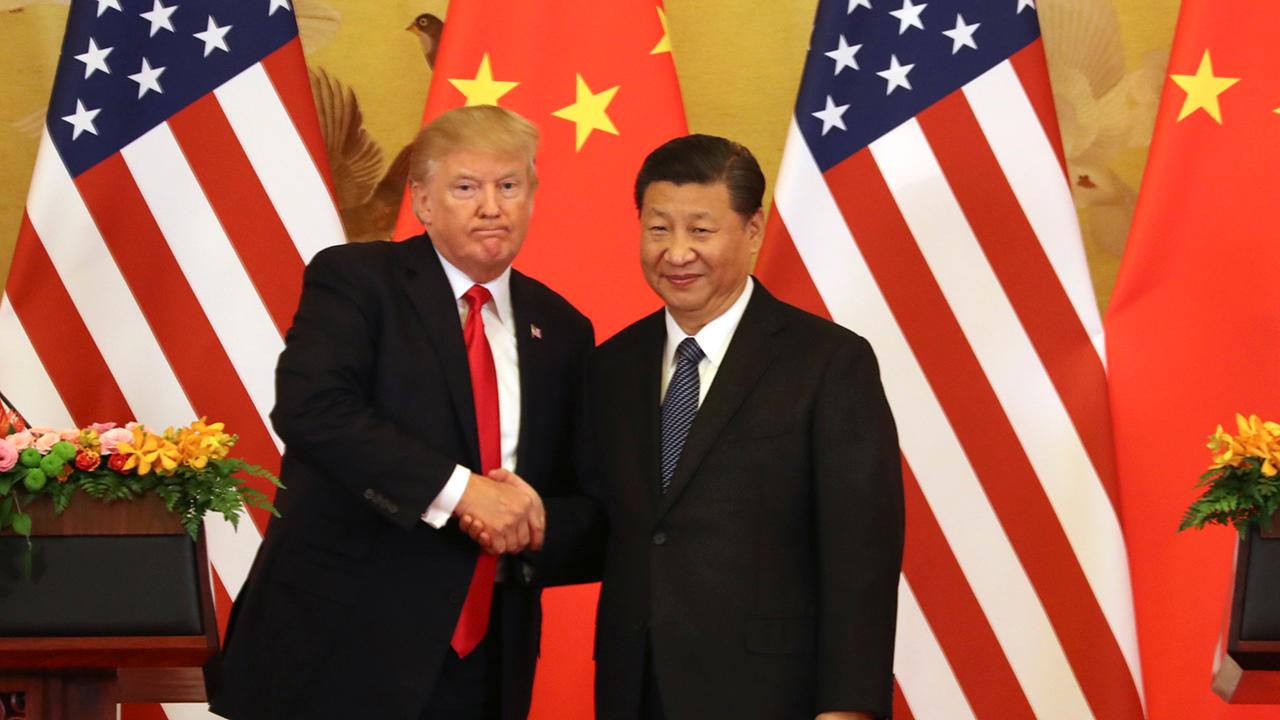Analyzing The Effects Of Trump's Trade Policies On America's Global Financial Standing

Table of Contents
The Impact of Tariffs on American Industries and Consumers
One of the hallmarks of Trump's trade policy was the imposition of substantial tariffs on imported goods. This protectionist approach aimed to shield American industries from foreign competition and boost domestic production. However, the consequences were far-reaching and complex.
The increased tariffs impacted various sectors differently. The steel and aluminum industries, initially beneficiaries of tariffs, experienced both gains and pains: some producers benefited from reduced competition while others faced increased input costs for imported materials. The agricultural sector bore a heavy brunt, facing retaliatory tariffs from major trading partners, leading to significant losses for American farmers. The manufacturing sector experienced a mixed bag as well, with some segments gaining protection but others facing higher costs for imported components.
The impact on consumers was equally significant. Increased tariffs translated directly into higher prices for imported goods, contributing to inflation and eroding purchasing power. This impact was felt across the board, from everyday consumer goods to automobiles and electronics.
Furthermore, the imposition of tariffs often provoked retaliatory measures from other countries, creating a cycle of escalating trade tensions and further disrupting global commerce.
- Increased prices for imported goods: Consumers faced higher costs for a wide range of products.
- Reduced competitiveness of American exports: Retaliatory tariffs made US goods less competitive in international markets.
- Job losses in some sectors, job gains in others: While some sectors benefited from protection, others experienced job losses due to reduced competitiveness and higher input costs. A nuanced understanding is critical here.
- Increased costs for businesses relying on imported materials: Businesses faced higher production costs, potentially leading to price increases or reduced profitability.
Trade Wars and Their Economic Consequences
Trump's administration engaged in several high-profile trade wars, most notably with China. These trade wars, characterized by the reciprocal imposition of tariffs and other trade restrictions, had profound and multifaceted economic consequences.
The trade war with China, for instance, significantly disrupted global supply chains, leading to uncertainty and reduced investment. Companies faced challenges in sourcing materials and distributing products, impacting production schedules and profitability. This uncertainty negatively impacted market confidence, dampening business investment and hindering economic growth. The long-term consequences could include shifts in global production patterns and a potential reshaping of the international trade landscape.
- Disruption of global supply chains: Businesses struggled with sourcing and distribution challenges.
- Uncertainty in the market leading to reduced investment: Businesses delayed or cancelled investment projects due to the unpredictable trade environment.
- Negative impacts on global trade and economic growth: Trade wars stifle global economic growth by reducing overall trade volume.
- Potential for escalation and further economic damage: Trade wars can quickly escalate, leading to even greater economic disruption.
Renegotiated Trade Agreements: NAFTA and Beyond
A key element of Trump's trade policy was the renegotiation of existing trade agreements. The most prominent example was the renegotiation of the North American Free Trade Agreement (NAFTA) into the United States-Mexico-Canada Agreement (USMCA). While the administration touted USMCA as a victory, the economic impact remains a subject of ongoing debate.
USMCA introduced changes in labor and environmental standards, aiming to improve working conditions and protect the environment. The impact on trade volumes between the US, Mexico, and Canada has been mixed, with some sectors experiencing increased trade and others facing challenges adapting to the new rules. Moreover, the administration withdrew from the Trans-Pacific Partnership (TPP), a comprehensive trade agreement with several Pacific Rim countries, significantly altering the US's position in the Asia-Pacific region.
- Changes in labor and environmental standards: USMCA included provisions aimed at improving labor practices and environmental protection.
- Impact on trade volumes between the US, Mexico, and Canada: The effects on trade volumes have been varied across different sectors.
- Potential benefits and drawbacks of the new agreements: The long-term economic consequences of USMCA and other renegotiated agreements remain to be fully seen.
- Comparison with the previous agreements in terms of economic outcomes: Long-term analysis is required to assess whether the renegotiated agreements improved or worsened economic outcomes compared to their predecessors.
The Overall Effect on America's Global Financial Standing
The cumulative effects of Trump's trade policies on America's global financial standing are complex and multifaceted. While some sectors might have experienced short-term gains from protectionist measures, the overall impact on key economic indicators has been debated. The US trade balance, while fluctuating, did not experience a dramatic improvement. Global investment flows experienced some shifts, but the long-term impact remains uncertain.
The impact on US economic growth is a subject of ongoing research and analysis. Some argue that the trade wars and tariffs hindered growth, while others maintain that the effects were minimal or even positive in some sectors. Furthermore, Trump's trade policies strained US foreign relations and international alliances, potentially undermining America's influence and standing in the global economic system.
- Changes in the US trade balance: The impact on the trade balance has been mixed and subject to ongoing debate.
- Shifts in global investment flows: Trade uncertainty may have led to shifts in global investment patterns, affecting the US.
- Impact on US economic growth: The long-term impact on US economic growth remains a topic of ongoing discussion.
- Changes in US standing among global economic powers: Strained international relationships could potentially affect the US's standing in the global economy.
Conclusion: Assessing the Legacy of Trump's Trade Policies on America's Global Financial Standing
The legacy of Donald Trump's trade policies on America's global financial standing is a complex issue with no easy answers. While some sectors might have experienced short-term benefits from protectionism, the overall impact on key economic indicators like GDP growth, the trade balance, and national debt requires further in-depth study. The long-term effects of the trade wars, renegotiated agreements, and increased tariffs will likely unfold over many years. The impact on US foreign relations and international alliances has undeniable implications for the US's standing on the global economic stage. It’s crucial to understand the multifaceted nature of this complex issue to form informed opinions and policies going forward. To further understand the intricacies of Trump's trade policies and their ongoing impacts, we encourage you to conduct further research into the available academic literature and government reports on the subject. [Link to relevant resources would be inserted here]. Understanding the effects of Trump's trade policies on America's global financial standing is crucial for navigating future trade negotiations and formulating effective economic strategies.

Featured Posts
-
 Pope Francis A Legacy Of Compassion
Apr 22, 2025
Pope Francis A Legacy Of Compassion
Apr 22, 2025 -
 Trump Supporter Ray Epps Defamation Lawsuit Against Fox News Jan 6 Falsehoods Alleged
Apr 22, 2025
Trump Supporter Ray Epps Defamation Lawsuit Against Fox News Jan 6 Falsehoods Alleged
Apr 22, 2025 -
 The Nationwide Anti Trump Movement Protester Perspectives
Apr 22, 2025
The Nationwide Anti Trump Movement Protester Perspectives
Apr 22, 2025 -
 Los Angeles Wildfires The Rise Of Disaster Betting And Its Implications
Apr 22, 2025
Los Angeles Wildfires The Rise Of Disaster Betting And Its Implications
Apr 22, 2025 -
 Fox News Faces Defamation Suit From Ray Epps Over Jan 6th Reporting
Apr 22, 2025
Fox News Faces Defamation Suit From Ray Epps Over Jan 6th Reporting
Apr 22, 2025
